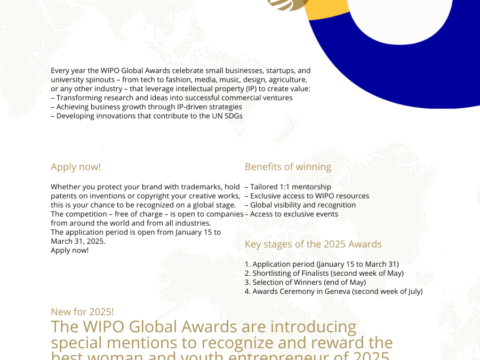At Lifbee Academy, they are dedicated to young scientists and innovators who want to succeed, for example, in the field of environmental sustainability and devote themselves to projects to mitigate the climate crisis, or actively create environmental innovations.
Today, environmental protection is more talked about than ever before. Various companies and brands are trying to switch to sustainable development, young teams of innovators want to focus on important “green” topics, but they often run into greenwashing in their activities.
Despite the fact that greenwashing has become a “buzzword” in recent years and we all know that these are solutions that are presented as “green” or sustainable, but in reality they do not contribute in any significant way to the protection or sustainability of the environment. In some cases, they even create new problems and challenges.
What we often do not realize is that in some cases it is a matter of professional ignorance and not a bad intention. For start-up projects that change their idea and concept based on feedback and new data, it may happen that the insufficient development of parameters for the criterion of environmental sustainability can lead to the mistake that it is a real environmental innovation.
How to think about environmental sustainability in a sufficiently comprehensive way in your projects, what parameters to check and what do most innovators and companies make mistakes in communication?
In an interview, expert and director of the communication department Katarína Kretter from the producer responsibility organization OZV ENVI – PAK brought up the topic of greenwashing. Katka has many years of experience in spreading awareness among manufacturers, municipalities and the public about environmental protection and waste.
Katka also contributes her knowledge to our Lifbee Academy program, where she brings sustainability topics closer to young innovators, who can serve as a source of inspiration for creating new ideas.
Katarína Kretter
Katka, could you explain to us what we should imagine under the term “greenwashing”?
The term greenwashing comes from the English words green (green, metaphorically ecological) and whitewash (to camouflage, beautify). Student and environmentalist Jay Westerveld first used the term in 1986 in an essay about hotel towels. In it, he pointed out the hotel’s policy of reusing towels to “save the environment”, when in fact it was just a focus on customers’ environmental sensibilities, which was a means to achieve the hotel’s goal of reducing laundry costs.
This term subsequently became established and greenwashing is defined as deliberately misleading consumers about the ecological benefits of a product, service or the entire company. I believe that it doesn’t always have to be an intention, but often just a lack of information. However, the result is the same – a solution that appears to be ecological, but in reality is not. The given company is profiled as environmentally responsible, but in reality it invests nothing, or only minimal resources, in environmental protection.
What are the most common ways companies practice greenwashing without even realizing it?
In recent years, sustainability, ecology and the relationship with the environment have become one of the fundamental decision-making factors for the purchase of any product for a considerable group of people. Companies are aware of this and fulfill their marketing needs with “green” communication. It is important to say that greenwashing is not always conscious and even experts agree that in most cases companies do not make their green marketing campaigns consciously misleading.
Greenwashing concerns almost all industries, event organization or architecture. For example, “green building” has become a problematic term. They thus denoted buildings that had “green” elements, a garden on the roof, and did not take into account that the structures of the buildings are largely made of monolithic reinforced concrete. The production of cement, the binding element in concrete, accounted for 8% of total global carbon dioxide emissions in 2015.
How can we distinguish between genuine environmental initiatives and greenwashing?
For all products, we must take into account their entire life cycle – from production to destruction. It is important to give priority to locally available products, harmless to health, with a long lifespan and especially to take into account possible recyclability, which manufacturers must already think about. In each of these stages, it is necessary to reduce the carbon and environmental footprint of both materials and processes.
The growing number of different “green” labels without comparative data is not only confusing, but also often misleading. This is about to change. The attributes – environmental, natural, biodegradable or climate neutral – will no longer be able to be used without verified information and evidence.
Members of the European Parliament recently approved the Green Claims Directive, which should put an order in misleading and false environmental labels and claims. It means that companies will soon have to refrain from “green” labels if they are not relevantly confirmed by, for example, test results. European legislation has a clear goal: to help customers navigate the confusing sea of various “eco” statements and to protect them from misleading marketing practices.
In the future, only such sustainability labels will be allowed in the European Union, which will be based on official certification systems or introduced by public authorities. Among other things, the directive will ban claims that a product has a neutral, reduced or positive impact on the environment due to emission compensation systems. It will no longer be possible to pay extra for greener energy, which may not even be greener, or to compensate the carbon footprint we create with a few euros extra to the bus ticket or plane ticket.
Do you have a favorite example of an environmental innovation, or a project, or a company that solves environmental sustainability and achieves positive results?
If I have to give one example for all, for me the example of sustainability – overall, not only environmental – is definitely IKEA. If anyone is interested in this topic, you should definitely download and read not only their Good for People and Planet strategy, but also their sustainability report, which can be a great inspiration.
In short, all claims that companies publish should be easily traceable and verifiable. At the same time, they should communicate sustainability only if it is a voluntary activity and its positive impact can be proven. And, of course, use renowned, reliable and independent certification systems.
What potential does the topic of greenwashing have for young innovators? What can they get hold of?
First of all, do not strive for perfectionism – big changes cannot be made quickly, you need to set a long-term goal and create a strategy for sustainable development. At the same time, maintain integrity and always strive for harmony between words and actions, and thus for harmony between practice and the principles to which they subscribe. Consult the experts for environmental campaigns – especially since in most of those that can be described as greenwashing, the primary intention is not to mislead. However, often the manufacturer, brand or product does not take this into account.
source: Lifbee







